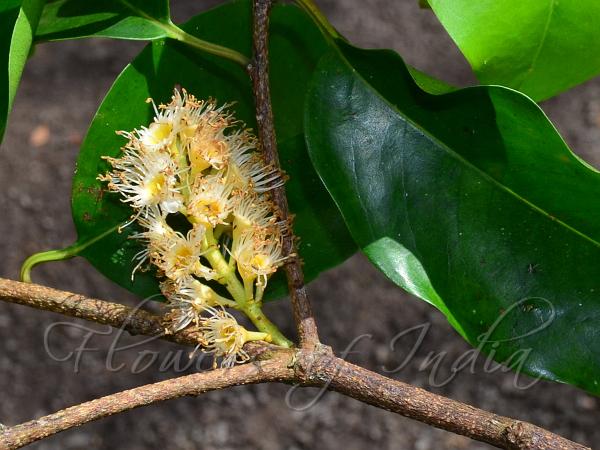|
| Java Cherry |
|

|

| File size | 474642 |
| Original date | 11/10/15 8:34 AM |
| Resolution | 0 x 0 |
| Flash | Flash fired, return detected |
| Focal length | 32.0mm |
| Exposure time | 1/200s |
| Aperture | 13.0 |
| Focus Distance | |
| Metering Mode | Multi-segment |
| Camera make | NIKON CORPORATION |
| Camera model | NIKON D5100 |
| Sensor type | OneChipColorArea |
|
|
|
|
Photo: |
Botanical name: Prunus javanica Family: Rosaceae (Rose family)
Synonyms: Prunus nitida, Prunus oblonga, Prunus martabanica
Synonyms: Prunus nitida, Prunus oblonga, Prunus martabanica
Java Cherry is a tree up to 35 m tall, rarely
buttressed, bark smooth, peeling, red- to dark-brown, with a distinct
smell. Leaves are ovate to oblong-ovate, rarely lanceshaped, 8-20 x
3-7.5 cm, base rounded to pointed, margin entire, tip tapering to
long-tapering, surface densely black-dotted beneath, herbaceous to
slighdy leathery, with 8-12 pairs of nerves, venation not very
distinct, both sides hairless, basal glands small, usually 2 on the
leaf-stalk just below the blade, sometimes in the margin of the blade.
Stipules narrowly triangular to lanceshaped, up to 5 x 1.5 mm, fused
with their excentric keeled midribs. Flowers are 5(-6)-merous. Sepals
are triangular, 0.5-1 mm long, hairy at tip. Petals are elliptic to
round, 2.5-4 mm long, white. Stamens are 25-50, filaments up to 6 mm,
anthers up to 1 mm long. Ovary is hairless, style up to 4.5 mm. Fruits
are ovoid to ellipsoid, base rounded, tip pointed, 1.5-2.3 x 0.7-1.2
cm, red when ripe, the endocarp hairless inside. Java Cherry is found
in Java, peninsular Malaysia, Yunnan, Thailand, Sumatra, Borneo,
Palawan, Sulawesi, Bali, Moluccas, New Guinea, Andamans, and Myanmar.
Flowering: December- January.
Medicinal uses: Bark is used for rice-bins, as
vermicide for buffaloes, and as fish poison.
Bark is used for rice-bins, as
vermicide for buffaloes, and as fish poison.
Medicinal uses:
 Bark is used for rice-bins, as
vermicide for buffaloes, and as fish poison.
Bark is used for rice-bins, as
vermicide for buffaloes, and as fish poison. | Identification credit: Joju P. Alappatt | Photographed in Saitankhadi, South Andamans, Andaman & Nicobar. |
• Is this flower misidentified? If yes,